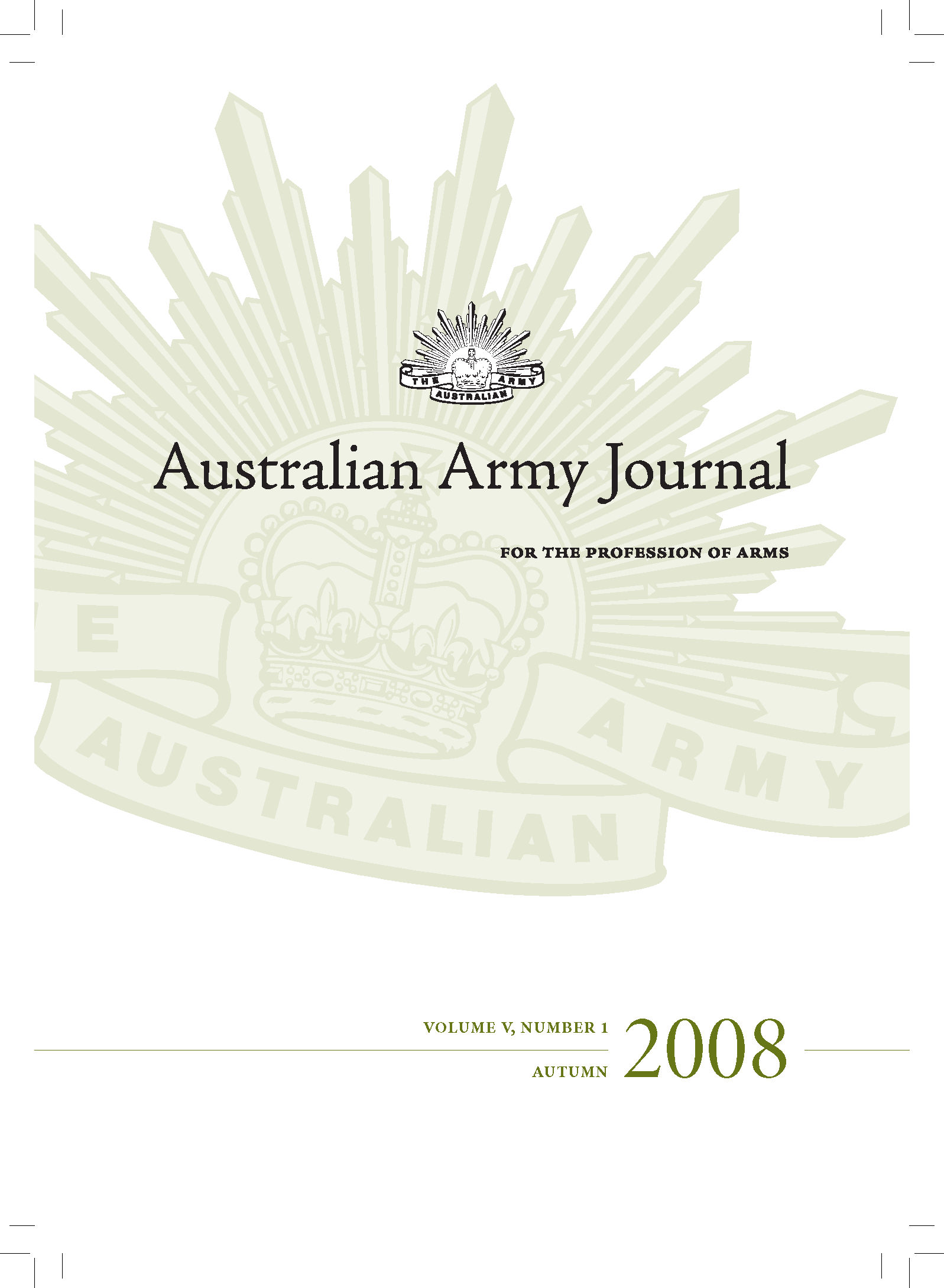This edition of the Australian Army Journal reflects on the Tet offensive of forty years ago. Tet has come to symbolise the difficulties of waging what we now term ‘wars amongst the people’ while being scrutinised by a hostile media and attempting to maintain the allegiance both of one’s own population as well as that of the nation being supported. This complexity and ambiguity is now regarded as inherent in the nature of war, though at the time many veterans of the Vietnam conflict felt bewildered at the political controversy over their service, especially in the aftermath of the Tet offensive when initial support for Australia’s involvement in the Vietnam War declined.
Due to the iconic significance of the Tet offensive we commissioned James H Willbanks to write the lead article in this edition ‘Reconsidering the 1968 Tet Offensive’. As Willbanks correctly observes, historians are cautious in drawing direct lessons from historical events—no matter how enticing the parallels between them. As he writes: ‘This is particularly true when comparing the wars in Vietnam and Iraq. There are more differences than similarities between the two wars and because they differ in so many significant ways, attempting to apply any lessons from Vietnam to the situation in Iraq is fraught with peril.’
While heeding Willbanks’s caution, we maintain that one thing Tet, and indeed the wider Vietnam conflict, makes clear is that military supremacy at the tactical and operational levels is no guarantor of strategic success. At a time when the Chief of Army is directing much of Army’s efforts to upgrading its doctrine for counterinsurgency warfare, this is an important revelation. Indeed, Colonel John Frewen emphasises the inextricable nexus between political and military elements of counterinsurgency in his excellent article analysing his recent service in Afghanistan. To further illustrate this enduring aspect of counterinsurgency we devote the Retrospect section of this edition to a detailed account of Australian politico-military operations in Phuoc Tuy Province that was written around the time of the Tet offensive.
The intricate balance between the use of force and the achievement of national political ends is perhaps the greatest challenge facing contemporary military forces. In his seminal work The Utility of Force—The Art of War in the Modern World, General Sir Rupert Smith argues persuasively that the old paradigm of interstate industrial war is no longer relevant. Today military forces must be capable of engaging in conflict along a continuum. Ultimately there is no substitute for the professional mastery of violence at the tactical level. As he argues ‘The outcome of tactics is simple: kill or be killed’.
General Smith also notes that the decision to enter conflicts and the manner in which they are conducted lies with the political leadership of the nation. Such decisions provide context and meaning for the use of military forces. The rules of engagement, the composition of force elements, the level of risk acceptable to the achievement of certain national ends and the duration of commitments, are all matters that lie within the legitimate realm of government decision-making.
Two of the articles in this edition directly relate to the decisions made at the highest level regarding force composition. In Messes across the nation, serving members of all ranks continue to discuss who is being sent on operations, and who is not. It is acknowledged that there is discontent in some quarters that not everyone is getting a chance to ‘fight the good fight’. But to argue that any tasks short of offensive manoeuvre are unworthy of real soldiers is to misunderstand the changing character of war, and the role of military forces as an instrument of statecraft. In an era of ‘war amongst the people’ there will be occasions when vital national interests are best secured, not by offensive manoeuvre, but by mere presence or coercion without resort to force in the traditional sense. To argue otherwise is to misunderstand the ‘utility of force’. Again, if Tet demonstrated one thing it was that tactical excellence cannot compensate for faulty political management. Soldiers, no matter how skilled, must cede these decisions to their legitimate political leaders. Nonetheless, we publish each of these articles in a spirit of professional debate. We welcome responses to them from other arms and the Special Forces community.
The Army Journal continues to go from strength to strength. This is due in large part to the efforts of its editorial advisory board. Over recent months the Chief of Army has approved certain changes to the composition of the board, as the terms of the original members have ended. In particular, we wish to thank Major General John Hartley (retired) for his contribution to the Army Journal. The Chief of Army accepted his resignation form the Board in December. Likewise, we extend our thanks to Major General Michael O’Brien (retired), Brigadier John Essex-Clark (retired), Professor Carl Thayer and Dr Peter Londey whose terms have expired. All of these board members made significant contributions to the excellence of the Journal. In their places we welcome Professor Kim Beazley, a highly respected former Minister for Defence; Professor David Horner, a distinguished former Army Officer and one of Australia’s most respected military historians; and Major General Mike Smith (retired), a distinguished former soldier with command experience at the highest levels. We are confident that the Australian Army Journal will continue to achieve the highest professional and intellectual standards under the new Board.
Good soldiering.

